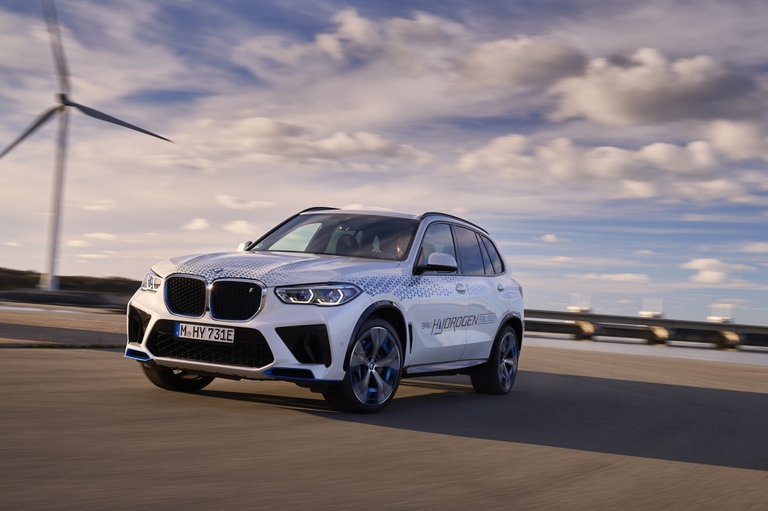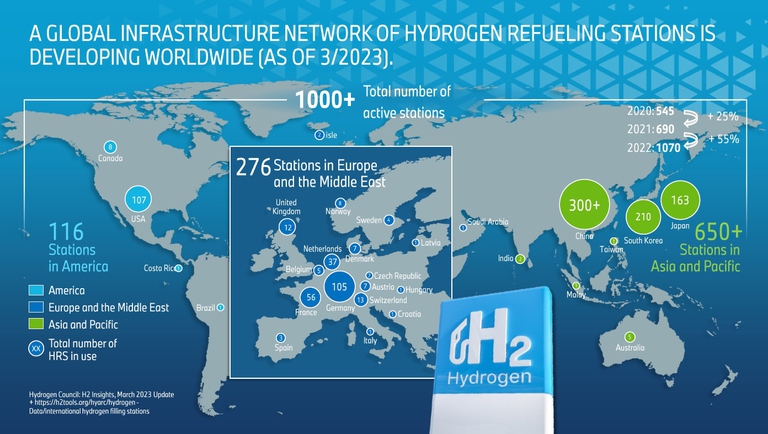https://www.lifegate.it/bmw-idrogeno-pezzo-mancante-mobilita
- |
- BMW continues testing on hydrogen cars:a fleet of 100 iX5 Hydrogens are currently deployed internationally for demonstration purposes.
- The world map of supply infrastructure highlights the strong advantage of Asian countries.
- In 2007 the first hydrogen BMW was delivered to the then president of the Lombardy Region Roberto Formigoni.
In Bmw a series of tests on a fleet of electric cars with fuel cells powered by hydrogen, conducted together with some partners in different parts of the globe.Objective?A possible series production.Yes, the matchhydrogen cars, between ups and downs, is not closed at all, on the contrary.And although numerous studies and research continue to indicate heavy transport vehicles (but also trains, ships and even planes) as the most suitable for the adoption of hydrogen fuel cells (because they are particularly suitable for long distances and the most expensive transports in terms of load and energy), the car that emits only water vapor from the exhaust continues to represent a solution alternative to the electric car.So the tests continue and after Toyota Mirai And Hyundai Nexo (the only two models currently on sale also in Italy), in chronological order the latest ones of BMW, with a fleet of iX5 Hydrogen, with the aim on the one hand of providing valuable information to designers and, on the other, highlighting the potential of the electric car with fuel cells.

How does a hydrogen-powered (electric) car work?
The objective of the pilot tests is to analyze all the different aspects of using the hydrogen car, including the functional components and the driving experience that – as also confirmed by our test – is completely similar to that of a “normal” electric car: silent, vibration-free, fun (the iX5 Hydrogen provide a power of 401 horsepower…).With an advantage:the times to fill up with hydrogen are significantly shorter than the fastest electric recharges available today, i.e 3/4 minutes maximum, with an autonomy of approximately 500 kilometers.But let's do a review.How does a hydrogen-powered car work?The fuel cell generates electricity autonomously using the hydrogen on board (the tank in the case of the BMW iX5 houses 6 kilos of hydrogen), and therefore does not need to be recharged from an external source.The only by-product emitted is the water vapor.
The BMW prototypes use fuel cells capable of generating continuous electric power of 125 kW/170 HP, with a refueling time of just a few minutes, as we have seen.Fuel cell technology has been tested for some time but, despite the numerous benefits, they remain some challenges to overcome, above all the large-scale supply of green hydrogen, i.e. produced from renewable sources, and the creation of refueling infrastructure;to date the situation in Italy can be easily summarized: Bolzano And Mestre they are the only two active stations, the first independent, the second just inaugurated by Eni.TO San Donato instead, on the outskirts of Milan, after many years (and announcements) the opening of a third refueling plant is still awaited

BMW:“Hydrogen has a key role to play in the energy transition process”
In short, while it is reasonable to expect a significant increase in the supply of green hydrogen in the coming years as a resource for reducing CO2 emissions related to transport, to date the most suitable "instrument" for the adoption of hydrogen remains trucks and trains, both an important transport solution for longer distances and heavier loads.However, a series of questions weigh on the car.In fact, if the technology is now mature, incentives and infrastructure are needed first of all.Yet, BMW seems determined to continue the development phase.To date a fleet of approximately 100 vehicles it is currently used internationally for demonstration and trial purposes.“Hydrogen is a versatile energy source that has a key role to play in the energy transition process and therefore in climate protection.After all, it is one of the most efficient ways to store and transport renewable energy,” he said Oliver Zipse, chairman of the board of directors of BMW Ag.
Identified as the ideal energy vector to accelerate the transformation of the mobility sector, for Zipse "hydrogen is the missing piece of the puzzle when it comes to emission-free mobility", underlining how a single technology (the battery-powered electric car) does not will be enough to solve the climate impact of mobility around the world.BMW has joined the campaign Business ambition for 1.5°C driven by the Science based targets initiative which plans to achieve the goal of complete climate neutrality along the entire value chain, from supply to the production and use phase, with a reduction in emissions by at least 40 percent by 2030 (compared to 2019).

An eco-flagship for the president of the Formigoni Region
But the iX5 Hydrogen is nothing but BMW's latest attempt to develop a hydrogen car.In the 2007 the then president of the Italian headquarters of the brand delivered to Roberto Formigoni, president of the Lombardy region, one BMW Serie 7 Hydrogen (the brand's then flagship) with the aim of "raising awareness among the media, institutions and companies of the hydrogen culture" in our country.It must be said that it was a completely different technological approach, where instead of the current fuel cells, the Hydrogen 7 had a 12 cylinder engine "bivalent" internal combustion, a technology that allowed operation on both petrol and hydrogen.The project, which included around a hundred demonstration cars, was abandoned in 2009 in favor ofelectric car.
